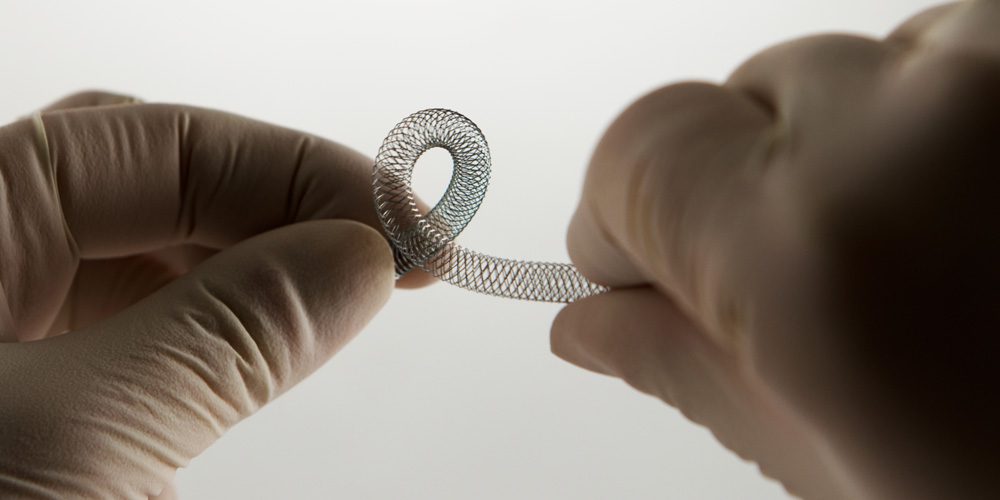Home » Could a metal with memory help solve our energy problems?
Could a metal with memory help solve our energy problems?

Nitinol can spring back to its original shape after being bent. One Cambridge company is trying to harness that property to make clean electricity.
Nitinol is a curious material. On the surface, it looks like any other piece of wire. But the nickel-titanium alloy is about 30 times more bendable than other metals. It can be twisted into almost any shape and — even more remarkably — it can return to its original form. It was developed in 1959 by military scientists looking for something to protect the cones of nuclear warheads, but instead its flexibility made it the perfect material for orthodontic braces and medical catheters.
Now, it could find another use: easing our energy crisis.
While oil and gas shortages caused by the Ukraine war are dominating the headlines, a slower-burn energy problem is unfolding. Electricity demand is expected to double or triple in the next few decades as millions of electric vehicles are deployed and heating systems move off fossil fuels.
An RBC study last month warned that Ontario could face energy shortages within four years. Meanwhile, the New York Times reports that between one and 10 per cent of the U.S. land mass might have to be turned over to solar and wind farms. The numbers vary wildly because nobody knows for sure how much electricity will be required. But one thing is certain: we need all the ways to generate and store clean power we can get.
Molly Wood, a former NPR journalist, now an investor at venture capital firm LAUNCH, says that researchers hunting for new power sources are pushing the boundaries of materials science. “I recently spoke with a company that is doing some sort of kinetic-magnetic, energy storage, involving a cylinder that floats magnetically off the ground — I couldn’t even describe it,” she says. “When it comes to new materials, absolutely every solution is on the table.”
And that’s where nitinol comes in.
Good vibrations
A Cambridge, Ont., startup called Extract Energy has created a system that exploits nitinol’s shape memory to create clean electricity. It plans to tap a source of power that exists all year round but becomes visible on cold winter days: the billows of heat that rise from buildings. Researchers have estimated that 65 percent of the world’s energy escapes as waste heat. “That’s free energy being lost,” says Ibraheem Khan, a materials scientist and Extract Energy’s chief executive.
It is relatively straightforward to capture searingly hot air blasted out by heavy industries and channel it toward uses such as district heating. But it’s much harder to make the economics work for places like data centres, which emit heat at lower temperatures.
Extract Energy’s device, which looks a bit like a shipping container, takes this waste hot air and passes it through a nitinol core. That causes the metal to repeatedly contract and expand. That motion can be used to generate clean electricity.
The technology is still at the prototype stage but is designed as a self-contained unit that could be installed in a wide range of buildings or used to harness the Earth’s geothermal energy. It has already been tested at a brewery in Calgary.
Unlike metals such as steel and copper, which humans have been using for hundreds of years, nitinol is in its infancy. But as we learn more about this material “the magic becomes more of a science,” Khan says, enabling devices like his to become more efficient.
Unusual materials, such as nitinol, or ideas like floating cylinder magnets will likely be only small parts of the solution to the enormous challenge of retooling the planet’s power supply in a few decades. Wind, solar and nuclear — probably fission but maybe fusion one day — will do the bulk of the heavy lifting.
But this outpouring of innovative ideas gives Wood hope amid the usually depressing climate change narrative. “It’s easy to sit here and say, ‘Our kids are going to live in a wasteland.’ But I think there’s just as much chance that it could be the opposite: that they could live in an energy utopia if we solve this,” she says.
“And it is solvable. It’s literally a matter of will and money and genius, which we have in abundance.”
Hear about more ways new materials are being used to tackle climate change on the latest episode of the new MaRS podcast Solve for X.
MaRS Discovery District
https://www.marsdd.com/
MaRS is the world's largest urban innovation hub in Toronto that supports startups in the health, cleantech, fintech, and enterprise sectors. When MaRS opened in 2005 this concept of urban innovation was an untested theory. Today, it’s reshaping cities around the world. MaRS has been at the forefront of a wave of change that extends from Melbourne to Amsterdam and runs through San Francisco, London, Medellín, Los Angeles, Paris and New York. These global cities are now striving to create what we have in Toronto: a dense innovation district that co-locates universities, startups, corporates and investors. In this increasingly competitive landscape, scale matters more than ever – the best talent is attracted to the brightest innovation hotspots.


